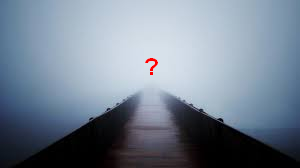
“No right, no wrong, no rules for me, I’m free”
—Lyrics of “Let It Go” in Disney’s Frozen (2013)
Columbus’s Imp
Forgive me, but it is no longer possible to remain silent.
We all know that Christopher Columbus discovered America. In this he was aided by his trusty compass, which always pointed North and South. With those two known, East and West were also known, and Columbus took up an advice of later generations: “Go west, young man, go west.”
Now consider the following situation. Let’s say a mischievous imp, call it “Columbus’s Imp,” stole into his quarters one night and transformed the magnetic pointer of the compass into wood, without changing its appearance. The ship is far at sea, they have no possibility of return. What would Columbus have done?
You guessed it. Columbus doesn’t know which way to go. His ship lies stranded in the ocean amidst bad weather and stormy seas.
The result? Columbus doesn’t discover America.
Because we live in a world of distinctions, and it never helps to blur distinctions until they’re indistinguishable from each other.
Now the same applies to the moral world. If we lose our moral compass, we’re lost at sea, and will surely perish from exposure.
My point: for decades now, we in the West have been inching away from moral clarity into a quicksand of moral ambiguity. It’s called “moral relativism,” and regarded as a pillar of Postmodernism. A nonjudgmental attitude is encouraged, and this is a good thing, as long as we don’t lose sight of our moral North and South.
But this is not what we see happening. Rather, the distinctions between right and wrong, and good and bad (I know there are truly evil people in the world, but I prefer to just say “bad”) are becoming, or even have already become, dangerously blurred. And this is the equivalent of seeking sympathy for the devil.
A Surfeit of Errors
We see this all across our culture, but nowhere more firmly than in movies and TV series. Consider the following series: A serial killer is doing a good thing when he kills other serial killers (Dexter). Another, who is also a cannibal, is almost idolized because of other, supposedly redeeming qualities, like being a good cook (Hannibal). (The Nazis, too, were known as patrons of the arts.) A Mafia boss is pictured as not all bad (The Sopranos). A chemist turned drug dealer is pictured as almost a role model (Breaking Bad). In the series 24, agent Jack Bauer tortures his adversaries, and his arguments for doing so are used to justify later, even more abominable atrocities in real life. (Practically no TV series goes by without the display of some form of torture—they’re trying to accustom us to it.)
I could go on, but you get the idea.
And now, finally, this insidious tendency has found its way into our fairy tales. Disney, which considers itself a company concerned with profits and forgets that it is also a social and educational institution with worldwide social and ethical responsibilities, has succeeded in introducing moral ambiguity into our children’s brains.
Fact: Fairy tales are the first introduction of children into social and ethical norms. They have to keep their story straight and simple. This is where children first learn to separate right from wrong and good from bad. If their minds are confused on this issue, sooner or later this is bound to have terrible repercussions for society.
First we had a makeover of the Evil Queen of “Snow White,” in the film Mirror Mirror (2012) and in the TV series Once Upon a Time (OUAT), where the Evil Queen is depicted as oh-not-such-a-bad-person-after-all, struggling to improve herself.
 The Evil Queen in Snow White (left), as Julia Roberts in Mirror Mirror (center), with stepson Henry in OUAT (right).
The Evil Queen in Snow White (left), as Julia Roberts in Mirror Mirror (center), with stepson Henry in OUAT (right).But let’s not lose our moral compass in the process. These nuances may be appropriate for an adult audience to consider, but the children are watching along with the adults, and since these are ostensibly “fairy tales,” many more children than adults. And they see things in black and white. They need to. Give them gray, and they don’t know how to process it. They cannot yet discern different shades or colors. In a similar vein, you don’t try to teach college-level physics to a child of five, either.
I’m sure you remember Pavlov’s dogs and conditioned reflexes?
In one experiment, Pavlov taught a dog to discriminate between a circle and an oval... When the dog pointed its nose at a circle, it received food. When it pointed at the oval shape, it received an electric shock. Gradually Pavlov made the oval rounder and rounder. Soon it was hard to tell the oval from the circle. The dog began showing signs of distress, whining and defecating. Pavlov said this showed an experimental neurosis. (Emphasis added.)
Now we’re blurring the line between good and bad for our children. The best outcome we can expect is moral neurosis. Also nowadays, we have college professors posing difficult moral conundrums to students ill-equiped for the task of resolving them. Perhaps there are moral questions that are finally irresolvable, in accordance with Gödel’s Theorem. But the vast majority of moral questions do have solutions.
What the scriptwriters of the revisionist school are forgetting is that if the wrong messages are fed into young, impressionable brains, we are placing our future, even the future of this planet, in jeopardy. Fairy tales are what they are and the way they are, and have been for a very long time, for a lot of important reasons, one of which happens to be social stability. If you swerve from the well-trodden path, if you strike out into uncharted territory, you’re playing with fire. You tamper with the cultural genes of civilization at your (and everyone’s) peril. Here, there really be dragons.

Maleficent at the end of Sleeping Beauty (left), at the beginning of Maleficent (center), and as Angelina Jolie (right).
MaleficentIn the meantime, we’ve also learned that the word “God” is banned from Disney movies. And now, as the most recent coup de grace, we have Disney’s movie Maleficent (2014). This is, of course, a prequel for another movie, Sleeping Beauty(1959), again by Disney. But with what a whopping difference!
In Sleeping Beauty, we have a classic fairy tale beautifully retold. The distinction between good and evil is properly upheld. Maleficent, despite her urbane sophistication, is the very personification of evil, finally exploding as an atomic bomb into a fire-breathing dragon.
In Maleficent, we have almost a justification of this evil. It’s an apology for what Maleficent is in Sleeping Beauty. She is cast, not as the villain she is in the original story, but virtually as a hero. As The Film Experience blogger Anne Mariewrote, “It’s the new Disney hero: the villain with the heart of gold.” This is nothing but an attempt to cutify and beautify evil, to put lipstick on an ugly thing.
 In a later Disney musical, Into the Woods (2014), (the Witch’s entries and exits are nothing if not dramatic!) we have the sum of it all in the final song:
In a later Disney musical, Into the Woods (2014), (the Witch’s entries and exits are nothing if not dramatic!) we have the sum of it all in the final song:
“Wrong things, right things …
Who can say what’s true? …
You decide what’s right. You decide what’s good.”
This is it. This is where the poison is injected into the subconscious. The decision is left to the ego, the Base Self (nafs al-ammara)—that which is least trustworthy in all creation. Thus, “Thou shalt not kill” becomes equal to “Thou shalt kill.” There’s no difference. And this is where we lose our moral compass. Good is good, bad is good, everything is good. But that’s what the bad guys say already: “We’re good, too.” Even though they’re harming and hurting you, or someone like you. Nor is this what our religions tell us. Rather, they say: “Woe to those who call evil good, and good evil; who substitute darkness for light and light for darkness” (Isaiah 5:20).
Who decides, who makes the rules of ethics? Whoever laid down the laws of nature in the first place. It’s in all the sacred scriptures: “Do as you would be done by.” Just as the laws of nature have consequences, so do the laws of ethics. The difference is that while the laws of nature are demonstrable in the short term, the effects of ethical rules—or their violation—make themselves felt in the long term. That a glass falling on concrete shatters is immediately observable. The effects of alcoholism are not immediately apparent, but no less destructive to the person and society. As the Master observed:
God says, ‘Both good and evil are from Me.’ But He further says, ‘Follow the good.’ He doesn’t say: ‘Follow the evil.’
God says, ‘I created both good and evil. If you follow the good, you will come close to Me. If you follow the bad, you will obey the ego/the Base Self. Don’t hold Me responsible later on.’ He distinguishes between the two, He doesn’t hold them the same.
(The Teachings of a Perfect Master (2012), p. 85.)
As everyone knows (or should), the devil is the Master of Deceit. And the greatest of the devil’s deceptions in our age is to convince us that he doesn’t exist. Now opposites come into existence together, in pairs. Negate one, and you negate its opposite, too. Without the South Pole, no North Pole. Without the devil, no evil. But also, no good, either. And since God wants us to be good, not evil, atheism is only a step away.
Is Knowledge/Science Enough?
I've already mentioned that I come from a background of science. Time was when I was infatuated with it. I wanted to share all knowledge with everyone in the world.
Gradually, however, I came to realize that there were more important things in life than knowledge. Instrumental in this realization were also the following facts:
- Archimedes, the mathematical and scientific genius of ancient Greece, was killed during a war.
- Lavoisier, the famous French chemist, was guillotined during a revolution.
- Evariste Galois, a promising young mathematician, was killed in a duel when he was only 21.
Later, however, I became aware of something even more important. In the absence of a moral hand to guide it, science is used to, well, build a better bomb. But the possession of knowledge exponentially increases the capability to harm others. A primitive caveman could slay only a few people using his bow and arrow. A hydrogen bomb can kill millions. Weaponized bird flu, perhaps hundreds of millions. So the more knowledge we have, the more crucial it becomes for everyone to be outfitted with superior morals.
Let us at least agree that five things need to be protected:
1. Life and limb
2. Sanity
3. Religion (Because it is a source of ethics, peace and happiness for human beings.)
4. Progeny (“Thou shalt not covet thy neighbor's wife” is included in this.)
5. Property
In principle, everyone agrees on the Ten Commandments (Twelve in Islam—17:23-37). You won’t see any believer knocking those. It is the practice that counts, for “actions speak louder than words.” Our faith is not what we profess to believe, it is the code by which we live as exemplified in our life actions, our deeds. I’m not saying that we should go about riding a moral high-horse trumpeting our righteousness, since the Base Self is capable of converting even the most innocent deed into an exercise in self-adulation. I’m just saying that we should simply do what is moral when the occasion presents itself, quietly and without fanfare.
Ethics
The most fundamental thing is ethical behavior. This is the foundation, the root. Omit this, and your other religious practices won’t help you either, no matter what your religion may be. It’s like a barrel with an inlet and an outlet faucet, and the outlet always runs faster than the inlet. The barrel will never get filled.
And the really interesting thing here is, you don’t have to convert to another religion in order to do this. (Here, I’m also reminded of the Master’s saying: “Now only the Japanese remain in the world who hold on to religion. No matter what they worship. They’re the only ones who possess a religion” (p. 13).) All of us can be more ethical while remaining in our own. The Master elaborated on this as follows:
Our world is very sweet. But we don’t know how to use it. We leave ourselves and the world in ruins. There’s unrest in the world now. Why? Everyone is sundered from their Books. The Peoples of the Books are all enemies of one another. The Books say: ‘Don’t do it, don’t kill one another,’ but they don’t listen, that’s why they’re at each other’s throats. If the people of Moses were to adhere to the Torah, the people of Jesus to the Gospel and the people of Muhammad to the Quran, they would all come together and be brethren. Everything would be solved. (p. 58. Emphasis added.)
Isn’t this just great? Isn’t this what we’ve been looking for? Just observe the ethical rules of your own religion properly, and the whole thing is solved! This could apply even to atheists with high moral standards, for they too (whether wittingly or unwittingly) borrow those standards from religion.
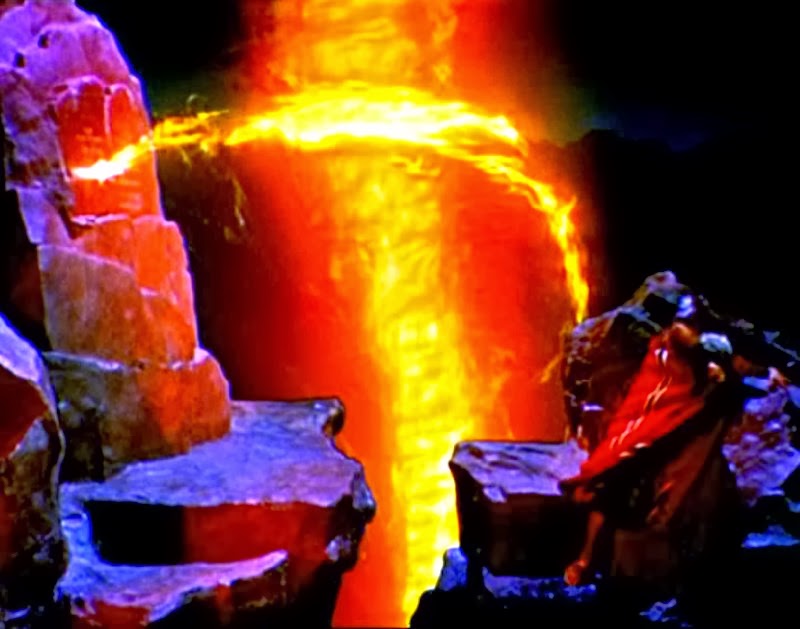
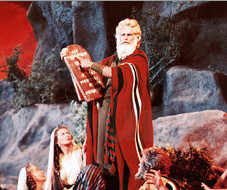

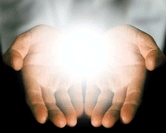

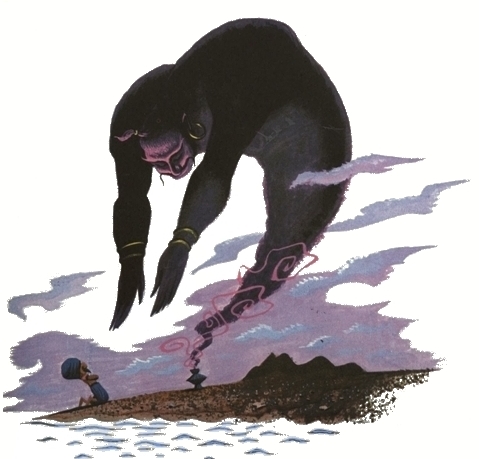

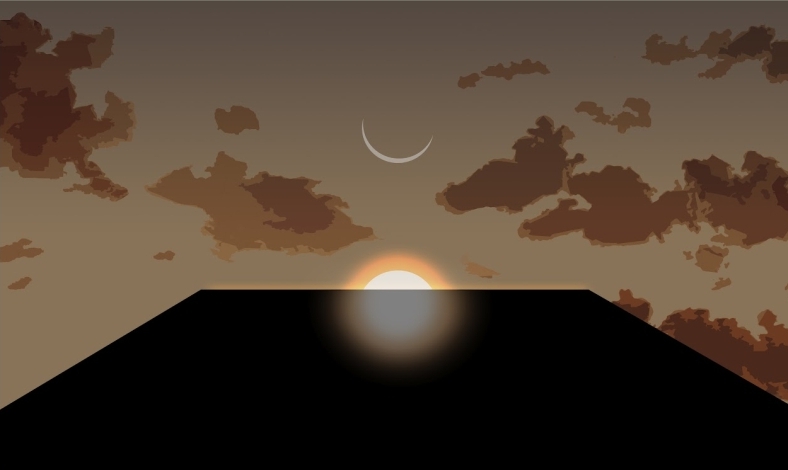

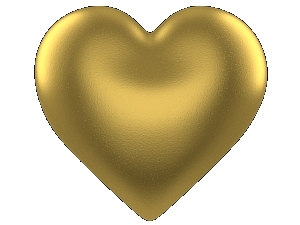 Gold, as we know, is the solar metal, and according to another great Sufi sage, Ibn Arabi, gold is the symbol of the original purity of the soul. Each child is born with that purity,
Gold, as we know, is the solar metal, and according to another great Sufi sage, Ibn Arabi, gold is the symbol of the original purity of the soul. Each child is born with that purity,  Finally, let us consider the meaning of shaving the head. In Christianity as well as in other religions, the tonsure has been a distinction of priests and the pious. Hairlessness is characteristic of both old age, signifying wisdom, and of extreme infancy, signifying the innocence and purity of a newborn baby (the author of the Tao Te Ching was called Lao Tzu, widely claimed to mean “old boy”). In a very real sense, the Pilgrim has died to his old self and been reborn: has donned a “shroud” during the Restriction, has gone through what is even now an ordeal, and come out intact—and, hopefully, transformed—on the other side. Further, a shining head is a solar symbol representing spiritual enlightenment, depicted by the halos of saints. Hence, the shaving of the head denotes the completion of the Pilgrimage, and signifies that one has been rewarded by the Lord for one’s troubles—has been promoted to an exalted station. Like Clarke’s monoliths, the Kaaba is a “door of transcendence”: it uplifts the spirit of the pilgrim in the same way that they transform ape-men into man or man into Star-Child.
Finally, let us consider the meaning of shaving the head. In Christianity as well as in other religions, the tonsure has been a distinction of priests and the pious. Hairlessness is characteristic of both old age, signifying wisdom, and of extreme infancy, signifying the innocence and purity of a newborn baby (the author of the Tao Te Ching was called Lao Tzu, widely claimed to mean “old boy”). In a very real sense, the Pilgrim has died to his old self and been reborn: has donned a “shroud” during the Restriction, has gone through what is even now an ordeal, and come out intact—and, hopefully, transformed—on the other side. Further, a shining head is a solar symbol representing spiritual enlightenment, depicted by the halos of saints. Hence, the shaving of the head denotes the completion of the Pilgrimage, and signifies that one has been rewarded by the Lord for one’s troubles—has been promoted to an exalted station. Like Clarke’s monoliths, the Kaaba is a “door of transcendence”: it uplifts the spirit of the pilgrim in the same way that they transform ape-men into man or man into Star-Child.  Each age must perforce understand religion according to its own conceptions. This does not mean that the basics of religion can be changed, but rather that our mentality is different from that of our ancestors, as indeed our children’s will be from ours. This means that the same truths will be retold in every age in an idiom specific to that age. Is there anything in our age that would help us better understand the details of the Pilgrimage?
Each age must perforce understand religion according to its own conceptions. This does not mean that the basics of religion can be changed, but rather that our mentality is different from that of our ancestors, as indeed our children’s will be from ours. This means that the same truths will be retold in every age in an idiom specific to that age. Is there anything in our age that would help us better understand the details of the Pilgrimage? 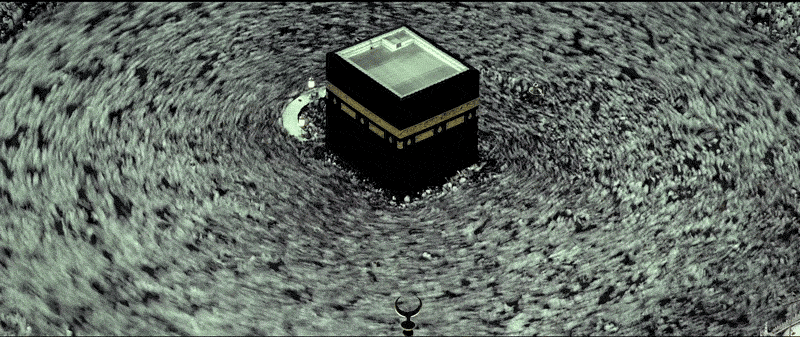
 Electrons move in a circular path under the influence of a magnetic field; or, conversely, the circular motion of electrons gives rise to a magnetic field perpendicular to the plane defined by the circle in which the motion takes place. The transverse fields of electric and magnetic force are in fact intimately related, so that it makes more sense to talk about an electromagnetic field rather than to consider the two fields in isolation. The helical motion of electrons in a coil gives rise to a strong magnetic field directed along the axis of the coil.
Electrons move in a circular path under the influence of a magnetic field; or, conversely, the circular motion of electrons gives rise to a magnetic field perpendicular to the plane defined by the circle in which the motion takes place. The transverse fields of electric and magnetic force are in fact intimately related, so that it makes more sense to talk about an electromagnetic field rather than to consider the two fields in isolation. The helical motion of electrons in a coil gives rise to a strong magnetic field directed along the axis of the coil. 
 Nevertheless, we now have to consider the existence of at least a fifth dimension in order to account for the spiritual dimension in man (and the universe).
Nevertheless, we now have to consider the existence of at least a fifth dimension in order to account for the spiritual dimension in man (and the universe). 
 The “lasing medium” has two mirrors at both ends, one semitransparent. Light enters this medium and moves back and forth (at the speed of light, naturally) between these two mirrors, exciting the atoms or molecules of the lasing medium. Light of a different directionality escapes through the walls of the cylinder. This back-and-forth movement continues until the atoms discharge exactly in lockstep, producing a light ray of great “purity” in which all the photons are exactly in phase and monochromatic (of the same color or frequency). When a sufficiently energetic beam is built up, it escapes through the semitransparent mirror, yielding a pencil of “coherent” light—with the same directionality, frequency, and phase.
The “lasing medium” has two mirrors at both ends, one semitransparent. Light enters this medium and moves back and forth (at the speed of light, naturally) between these two mirrors, exciting the atoms or molecules of the lasing medium. Light of a different directionality escapes through the walls of the cylinder. This back-and-forth movement continues until the atoms discharge exactly in lockstep, producing a light ray of great “purity” in which all the photons are exactly in phase and monochromatic (of the same color or frequency). When a sufficiently energetic beam is built up, it escapes through the semitransparent mirror, yielding a pencil of “coherent” light—with the same directionality, frequency, and phase. 

 All pilgrimages are, to borrow a phrase from Jules Verne, a “Journey to the Center of the World.” (“World” here does not, of course, mean the physical globe of the earth.) In a certain very real sense, the pilgrim is returning to the Origin, both in space and in time, of the universe. The North Pole—pointing toward the North Star—is a fitting image for this “still point of the turning world.” Since Adam, the first man, was the first to visit the Black Stone and circumambulate it, this event is an archetypal model for all subsequent journeys by all human beings to all other sanctuaries conceived of as being “the Center of the World,”
All pilgrimages are, to borrow a phrase from Jules Verne, a “Journey to the Center of the World.” (“World” here does not, of course, mean the physical globe of the earth.) In a certain very real sense, the pilgrim is returning to the Origin, both in space and in time, of the universe. The North Pole—pointing toward the North Star—is a fitting image for this “still point of the turning world.” Since Adam, the first man, was the first to visit the Black Stone and circumambulate it, this event is an archetypal model for all subsequent journeys by all human beings to all other sanctuaries conceived of as being “the Center of the World,”  The Black Stone, then, is the keystone in the sense that it is both the first and the last, the alpha and the omega. At first, its displacement from the center of the Kaaba (the vertical axis) to the corner may appear to be a discrepancy. The alif, however—the first letter of the Arabic alphabet, as is aleph in the Hebrew—consists of a vertical stroke slightly curved to one side at the bottom.
The Black Stone, then, is the keystone in the sense that it is both the first and the last, the alpha and the omega. At first, its displacement from the center of the Kaaba (the vertical axis) to the corner may appear to be a discrepancy. The alif, however—the first letter of the Arabic alphabet, as is aleph in the Hebrew—consists of a vertical stroke slightly curved to one side at the bottom. 
 At this point we might remember that there was another House of God besides the Kaaba, for which, as we have seen, the latter provides the archetype. Jacob, in his dream at Haran, saw a ladder reaching up to heaven, with angels ascending and descending on it, and heard the Lord speaking from above it, saying: “I am the Lord God of Abraham.” Jacob woke up, and said: “This is none other but the house of God, and this is the Gate of Heaven” (named the “Sun Door” in other traditions—recall the “Star Gate” of 2001). He took a stone that had been serving as his pillow, set it up as a monument, and called the place Beth-El: “the House of God” (Genesis,28:12-19).
At this point we might remember that there was another House of God besides the Kaaba, for which, as we have seen, the latter provides the archetype. Jacob, in his dream at Haran, saw a ladder reaching up to heaven, with angels ascending and descending on it, and heard the Lord speaking from above it, saying: “I am the Lord God of Abraham.” Jacob woke up, and said: “This is none other but the house of God, and this is the Gate of Heaven” (named the “Sun Door” in other traditions—recall the “Star Gate” of 2001). He took a stone that had been serving as his pillow, set it up as a monument, and called the place Beth-El: “the House of God” (Genesis,28:12-19).  Furthermore, this Cosmic Pillar forms the axis of the Cosmic Mountain (the Magic Mountain that represents the universe), the Sacred Mountain (e.g. Mt. Meru, Mt. Alburz, Mt. Gerizim, Mt. Olympus), the cone that represents this mountain, the evergreen Christmas tree with a star at the top which resembles the mountain, the Wheel of Life, the World Tree, the Tree of Life, of which—for example—the shinbashira (“heart pillar”) column at the center of Japanese pagodas is symbolic. In the upward direction are ordered the various heavens. Its base is in our four-dimensional space-time continuum. In the negative direction, towards the underground roots, are the various hells and infernal regions.
Furthermore, this Cosmic Pillar forms the axis of the Cosmic Mountain (the Magic Mountain that represents the universe), the Sacred Mountain (e.g. Mt. Meru, Mt. Alburz, Mt. Gerizim, Mt. Olympus), the cone that represents this mountain, the evergreen Christmas tree with a star at the top which resembles the mountain, the Wheel of Life, the World Tree, the Tree of Life, of which—for example—the shinbashira (“heart pillar”) column at the center of Japanese pagodas is symbolic. In the upward direction are ordered the various heavens. Its base is in our four-dimensional space-time continuum. In the negative direction, towards the underground roots, are the various hells and infernal regions. 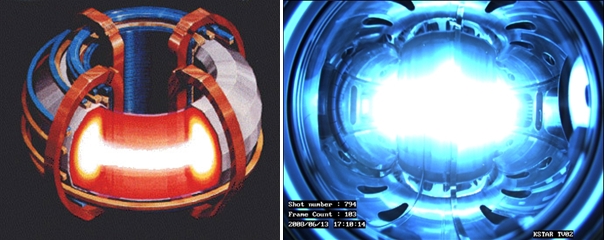
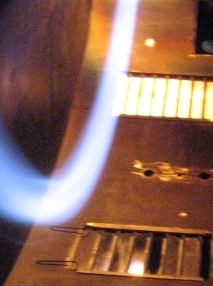 This plasma would, of course, instantly vaporize anything it came into contact with, so the idea has been proposed of confining it in a “magnetic bottle.” In the tokamak design, this bottle consists of a toroid, or doughnut-shaped ring. Although tokamaks of the same circumference as the LHC have not yet been built, one can imagine such a device, a short segment of which—while still curved—would then approximate a straight line.
This plasma would, of course, instantly vaporize anything it came into contact with, so the idea has been proposed of confining it in a “magnetic bottle.” In the tokamak design, this bottle consists of a toroid, or doughnut-shaped ring. Although tokamaks of the same circumference as the LHC have not yet been built, one can imagine such a device, a short segment of which—while still curved—would then approximate a straight line. 